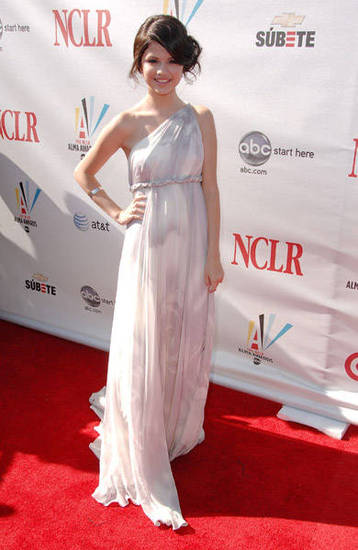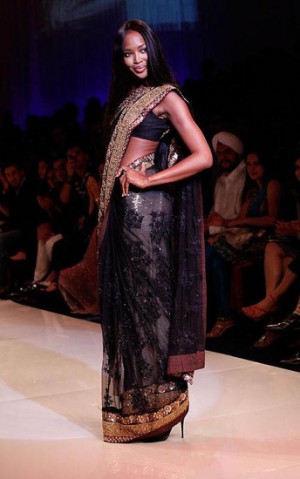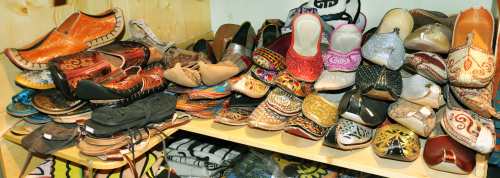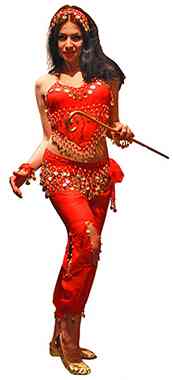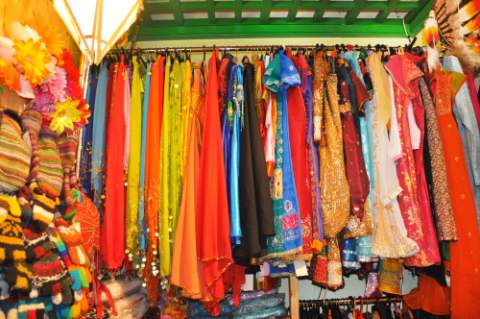Fashionable ethnic dresses. There are many types of ethnic clothing in the store, only some of the samples are shown in the photo. Characteristic features of the qipao cut.
This fashion emerged at a time when almost the entire world was going crazy for minis. A rather small part of the population reacted with indignation to this mass insanity and opposed short, constricting clothes to long and loose clothes that were more natural for the body. The hippie movement was international - it was joined by representatives different nationalities, each of which brought local flavor to it. The new direction was of keen interest to fashion designers; they appreciated its non-triviality and internal diversity. This is how the ethnic style of clothing appeared - a real find for those who want to be different from others.
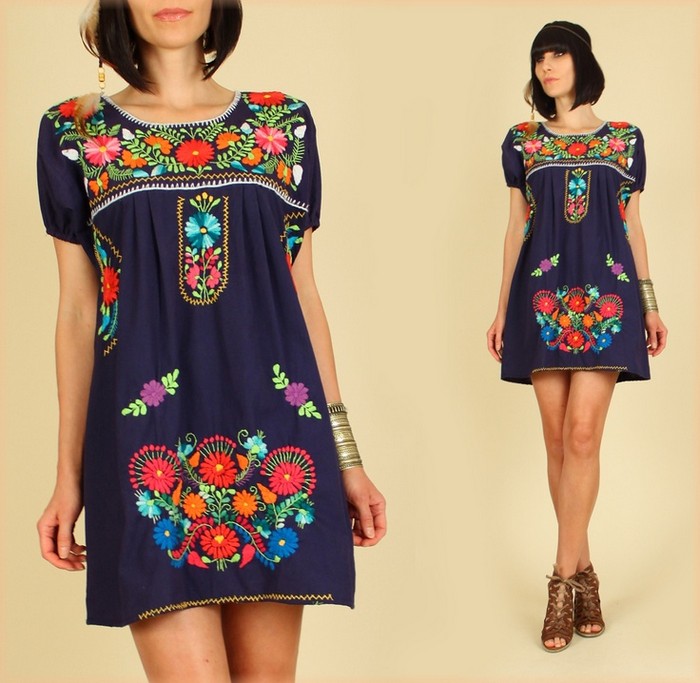
Fashion direction
The great couturier Yves Saint Laurent was the first who decided to shock the public by placing the clothes of “wild” peoples on high podiums. He created collections in African, Peruvian, Chinese and Russian styles. Fashionistas were shocked by short cocktail dresses woven from scrap materials: wooden beads, flax fibers and dried palm leaves. And the screaming primitive colors and decorations made from animal fangs made them clutch their hearts. However, the most daring ladies immediately felt all the advantages of such a wardrobe. In order to attract attention, to emphasize your individuality, the best way you can't imagine.


The example of Yves Saint Laurent turned out to be contagious. Other fashion designers appreciated the promise of the direction he had discovered and decided to try their hand at it. Today, not a single Haute Couture Week is complete without new collections with ethnic motifs. Stylists “play” with numerous elements and details of various national clothes, constantly offering fresh, original solutions.

Floral motifs are actively used by fashion designers, as it always looks original.
Ethnic style is international. It incorporates the characteristic styles, prints, colors and decor of various peoples inhabiting our planet. Therefore, several national subspecies are distinguished within it:
- Greek
- Egyptian
- Indian
- African
- Japanese
- Chinese
- Slavic
- Indian
- Scottish
- Scandinavian
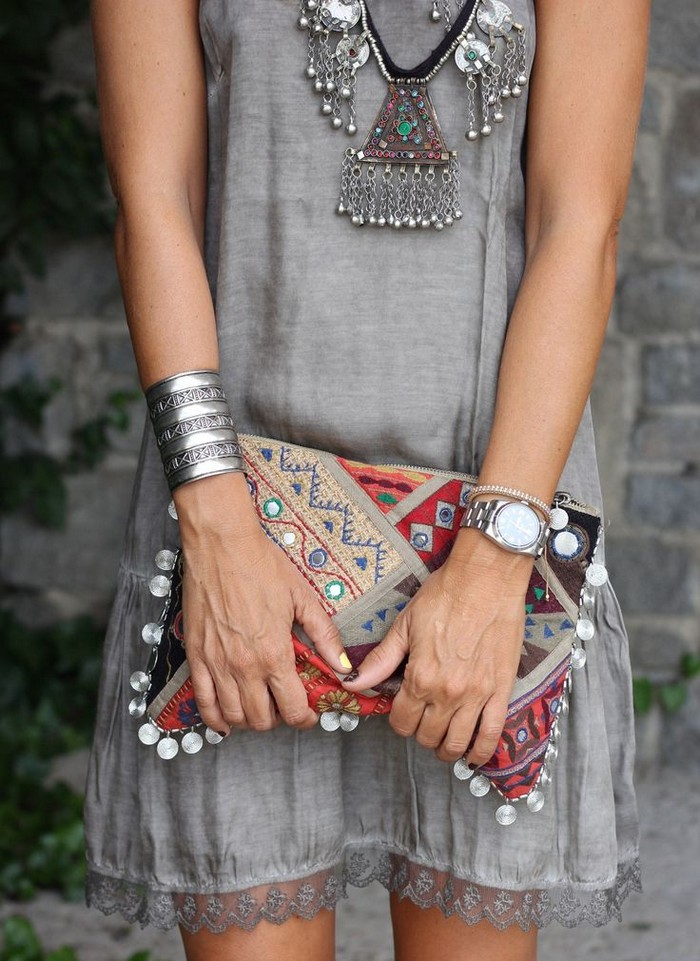
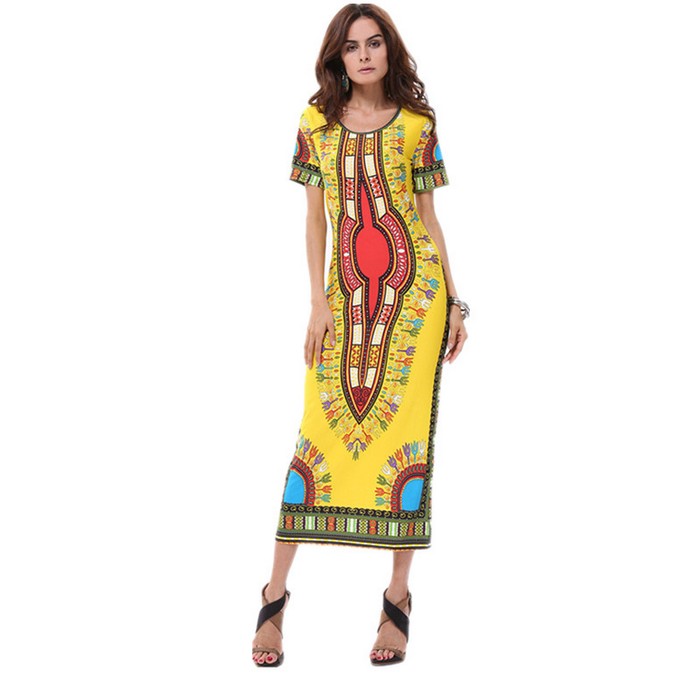
In addition, depending on climatic conditions, each of these styles received its own “specialization”. For example, Greek and Indian are widely used in creating summer sundresses and evening dresses. And Scandinavian has taken a strong place in the winter wardrobe.
All microstyles today are used not only in pure form– certain elements from them have spread widely throughout the fashion world and are no longer perceived as something out of the ordinary. A sweater with deer, a wrap dress or sandals with a fastening on one toe have become as commonplace as a sheath dress and a pullover. Nobody remembers their Norwegian, Japanese and Greek roots anymore. But at the same time, ethnic details are still able to add an interesting twist to any image, making it distinctive and original. For example, leopard print, borrowed from African style, successfully plays this role.
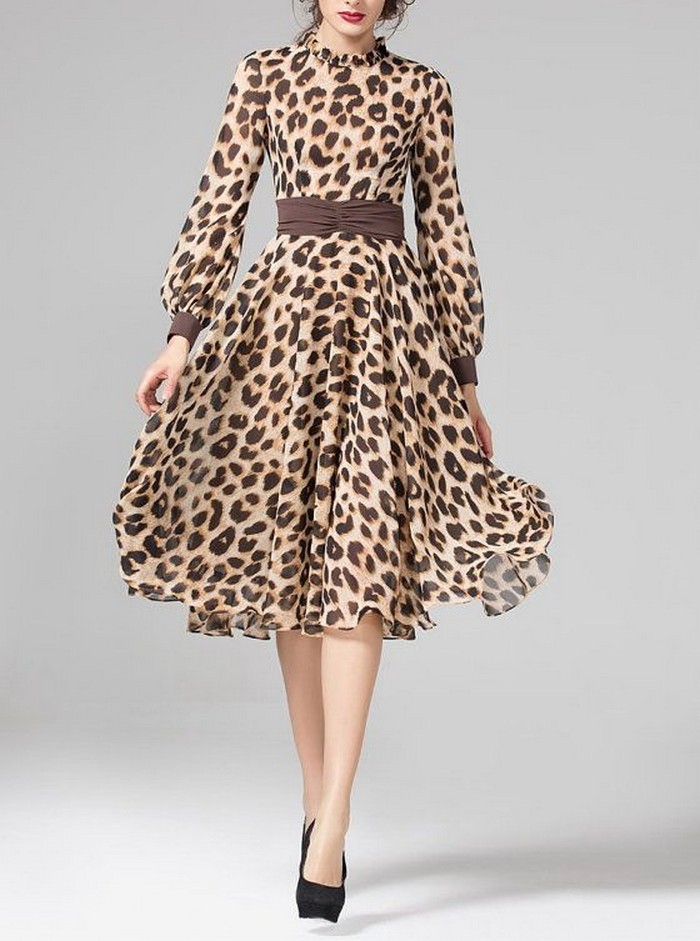
The characteristic element of the African direction is very popular among designers
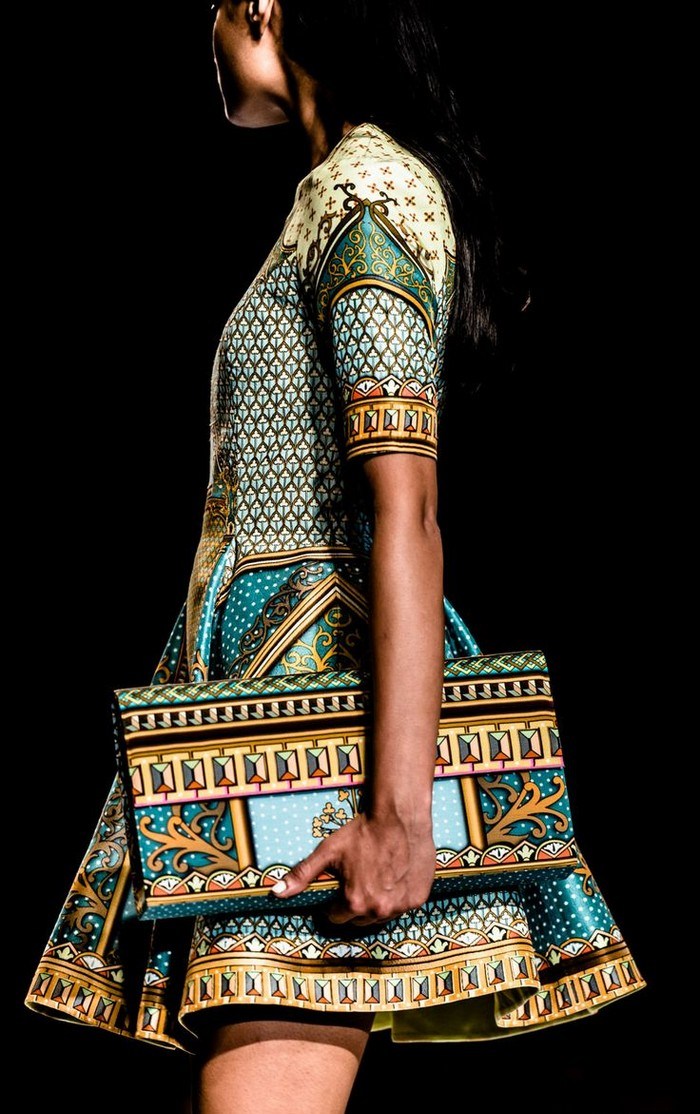
Bright geometric prints are very relevant for the warm season
Ethnic clothing options
When thinking about creating an ethnic wardrobe, it is worth carefully studying the characteristic features of a particular microstyle to determine what you like best and what looks will suit you. All these trends coexist under the roof of ethnicity - and by choosing any of them, you will find yourself in the trend. In addition, today's fashion values individuality and does not require adherence to the mainstream, that is, doing like everyone else. Having gone through waves of mass passion for Japanese, Indian and Scandinavian themes, fashion science now invites women not to “get hung up” on one thing, but to try different variants, don’t get tired of surprising others with new images, searching and finding yourself.
So, the features of ethno-microstyles:
- Sultry African. He was at the top of the list because he is now at the peak of popularity. It stands out with bright animalistic and geometric prints, as well as catchy decorative elements - tassels, ropes, and so on. Things “from Africa” are intended to be worn exclusively in the warm season, since they are sewn using light fabrics, and their styles are loose and flowy. But “animal” prints - zebra, snake and leopard - have confidently settled on demi-season and winter clothing. It is interesting that African exoticism suits almost any type of appearance - blondes, brunettes, and redheads, since its color range is extremely wide. Ideal for a seaside holiday and traveling to hot countries.

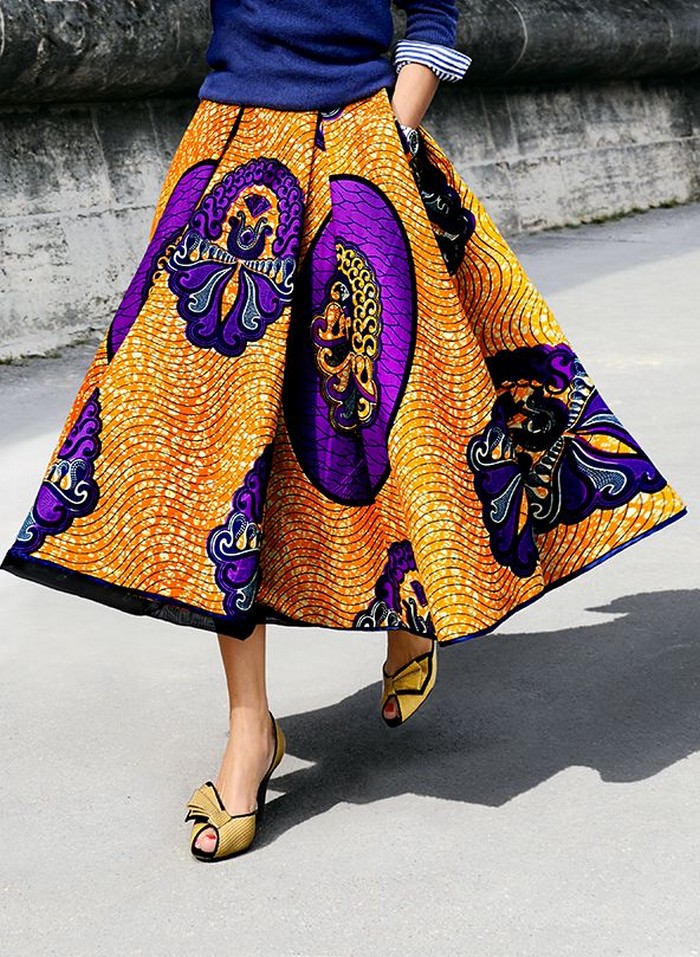
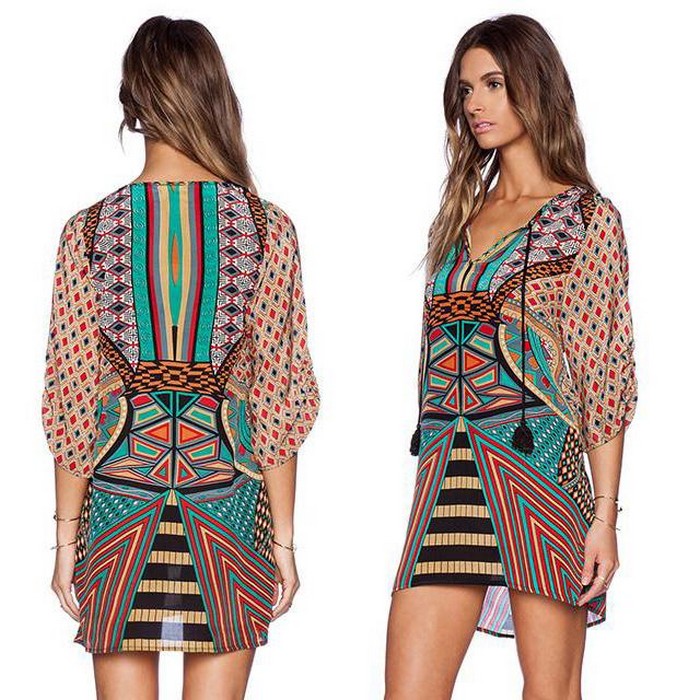
- Divine Greek. The complete opposite of the previous direction. No flashy prints or baggy styles. Ethnic dresses in greek style, like the columns in the Greek hall, are distinguished by beauty, grace and simplicity. Authentic option - White dress to the floor made of flowing fabric with drapery - today it has numerous fashionable variations(high waist, deep neckline, open shoulder etc.). Wearing such an outfit, any woman can feel like a goddess. Exactly any - because many flowing folds will hide imperfections and gently emphasize femininity. A great option for an evening out.
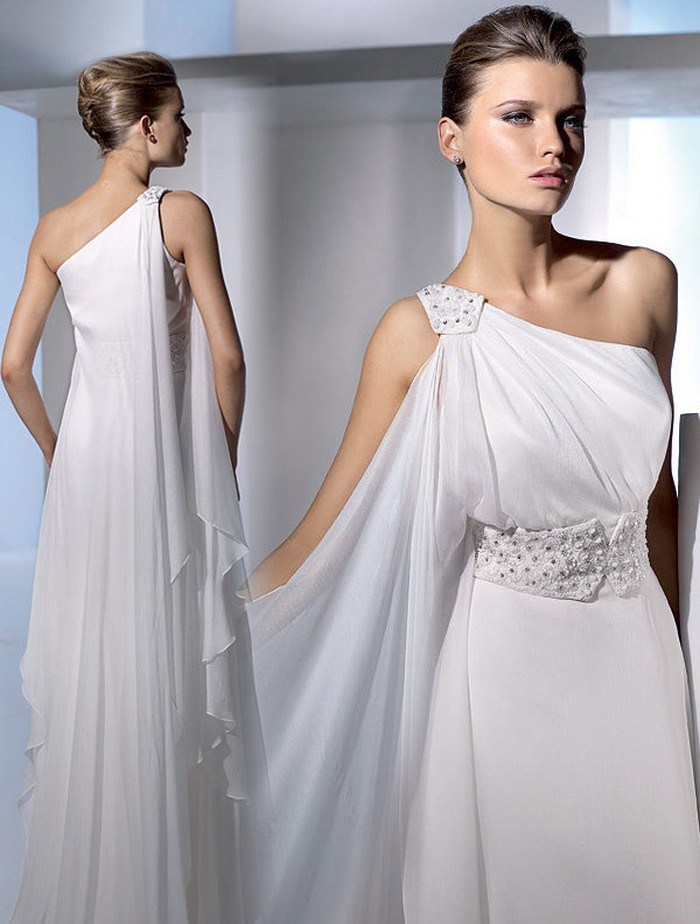
- Sophisticated Japanese. To emphasize the grace of the girl, the emphasis in Japanese clothing was on her thin neck and waist. Hence the special cut - V-neck, wide belt, loose sleeves, which is what we see in a kimono. Initially, only three colors were used - black, white and red. But over time, the color range has expanded. The characteristic print is sakura flowers. The kimono shape is widely used in modern dresses - mainly wrap models. Moreover, the length in them can be very different - up to mini - unlike classic version to the floor The fabrics chosen for sewing are usually soft, flowing and shiny. Initially, kimonos were made of silk.
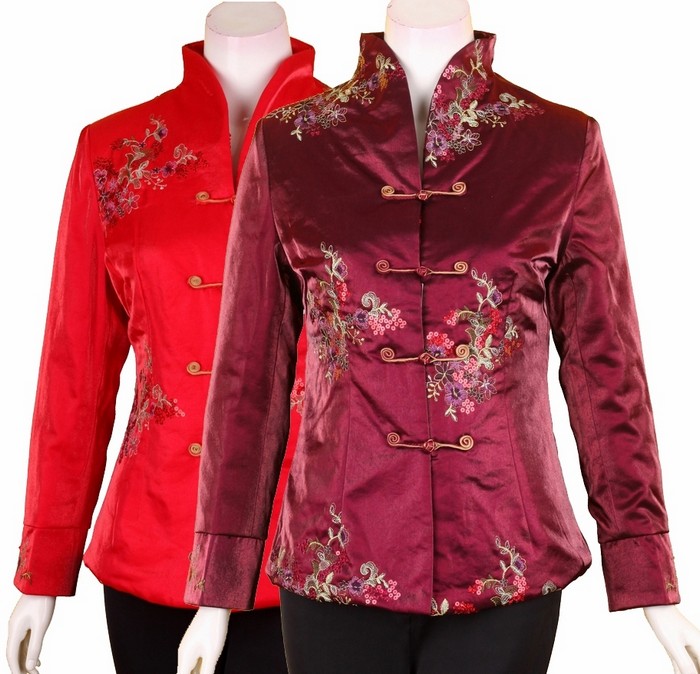

Looks very good on fragile women.
- Elegant Chinese. Somewhat similar to the previous microstyle, probably because it is also designed for thin women vertically challenged with small breasts. A typical representative Chinese national clothes in women's wardrobe is narrow straight dress with a stand-up collar made of silk and other delicate fabrics. Local women often wear a cotton set of a long shirt with the same stand-up collar and straight pants. The most widely used colors in Chinese clothing are red, gold and white. Common prints include hieroglyphs, dragons and large beautiful flowers.
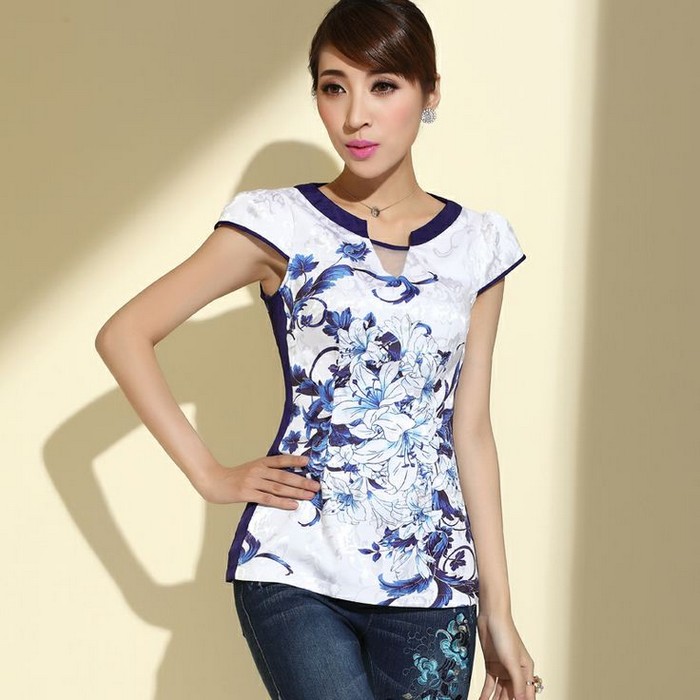

Stylish dress for slender fashionistas

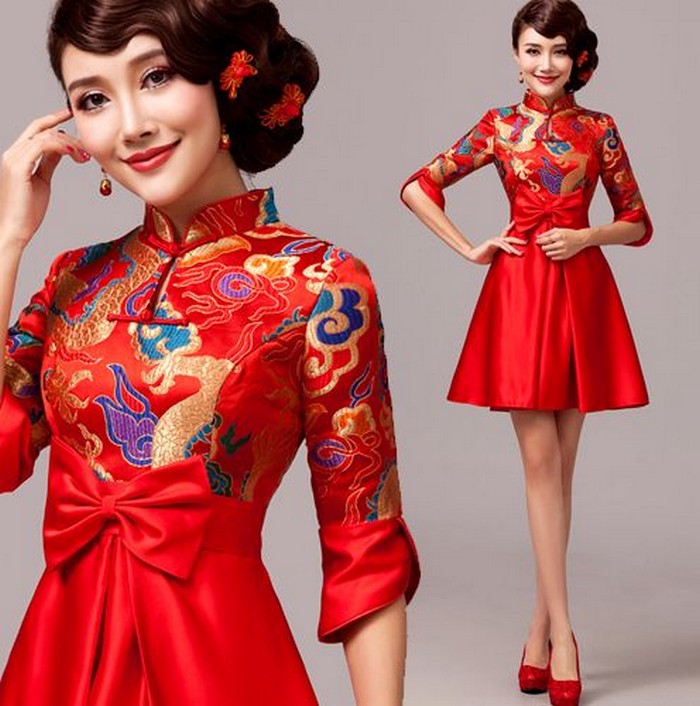
Ethnic clothing style 2016
I would like to continue the conversation about national trends in ethno-style in the context of their relevance in the new fashion season.
Still in demand Slavic style. This concept combines the features of Russian, Ukrainian, Belarusian and other clothing. Slavic peoples. Certainly special national traits Each of these directions has its own, but there are also elements common to them: an abundance of embroidery, large flowers, ornaments, linen fabric, lace and fur. Fashion designers build on this, offering new models in this style. Along with Russian colorful scarves and Ukrainian embroidered shirts, new trend– T-shirts with Belarusian red ornaments on a white background.
Stylish ethnic wear for theme parties, festivals and everyday wear.
Concept party clothes very extensive and multi-valued, depending on the traditions of society and the accepted dress code. But what if Indian style party? Or party at chinese style ? By visiting our store, you can easily find a suitable suit for yourself! We offer a large assortment of national clothing from China, India, and youth Nepalese clothing! You can easily choose a beautiful, bright and festive outfit!
All clothing is always in stock in the store.
Clothing by country.
Clothes by type.
You will find approximate prices for ethnic clothing
There are many types of ethnic clothing in the store, only some of the samples are shown in the photo.
The store presents ethnic wear of various nationalities and countries, from China to Latin America - ethnic outfits in their ancient, traditional form, for example national, traditional chinese clothing or stylized outfits in the style of the 60s - trends in the latest new “fashion” traditions, for example, Afghani pants, Aladdin or Zouaves, tunic or stylized Balinese or indonesian clothing.
The assortment of our ethnic store includes arafatkas, Aladdin pants, saris, ponchos, kimonos, tunics, costumes for oriental dance(belly dance), Chinese, Indian, Peruvian, Nepali and Thai ethnic clothes, blouses, bags in ethnic style, shoes and much more.
Last update:
Youth stylized ethnic wear from Nepal - (July 25).
Aladdin pants made of silk, cotton - (July 25).
Indian clothes - sari, shalwar-kamis, lehnga-choli - ( July 22).
Chinese clothing - (July 23).
Costumes for oriental dance (large sizes available) - (July 25).
Warm clothes from Nepal - (May 28) .
One of the most interesting trends in ethnic clothing is the national clothing of India:
-
-
-
-
-

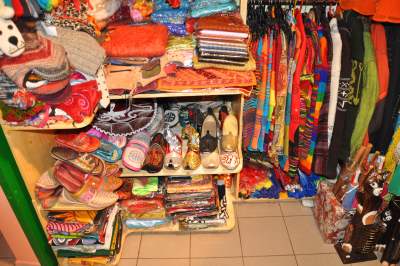

Regular silk, georgette and organza sarees.

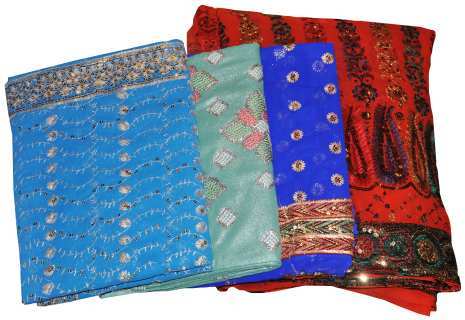
 - designs and patterns are different - a very large selection!
- designs and patterns are different - a very large selection!
Price - 6800 - 14800 rub. Available in all kinds of colors, shades and color combinations. In our store you can also buy ethnic wear with embroidery, beaded and sequined designs.
Lenga-choli.


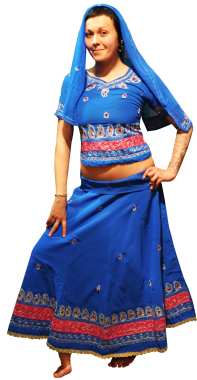
Price: from 5800r to 9800r. Assorted colors.
One of the oldest types of clothing in Indian ethnicity is the salwar kameez (shalwar kamis).
It consists of a long frock coat, knee-length, with slits on the sides, trousers narrow at the bottom and wide at the top and, as a rule, a light shawl. Homeland shalwar kamisa counts middle Asia, but over the past centuries, this elegant and elegant clothing has gained popularity not only in India, but throughout the Asian region (for example, Bangladesh is also considered its national clothing).
Made by Indian fashion designers. Hand embroidery is individual for each model.
![]()
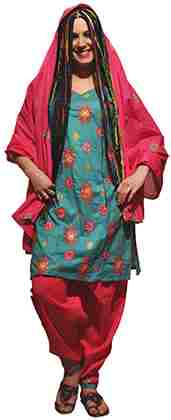
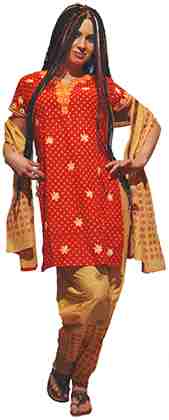

Price: from 5800r to 9800r.
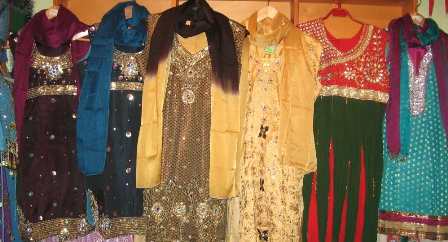
More than 30 types available!
Nepalese ethnic clothing in assortment (Nepali Aladdins, sweaters, skirts)
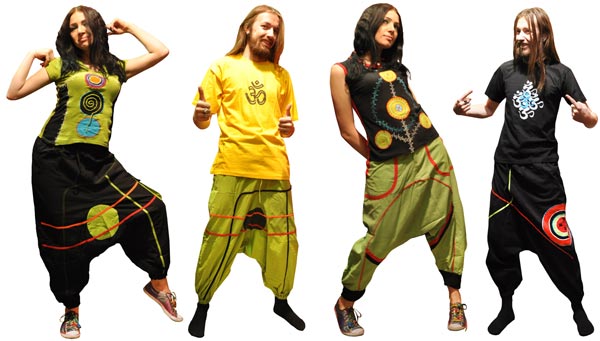
Our ethnic clothing store offers the widest range of clothing from Nepal in Moscow! All kinds of Aladdinkas, bloomers, afghanis, zouaves, sweaters, blouses, tops, T-shirts, jackets, bags of various colors, shapes and types.
If you want to buy ethnic clothes, come to us. With us you will definitely find something that you will like.
Ethnic goods store in Moscow - directions
There are T-shirts with ethnic designs on sale.
!!! The photo shows only some samples; there are many more in the clothing store.
Pants - Aladdin, Afghani, Zouave, trousers made of silk, cotton, knitwear and other fabrics - more than 40 types available from the lightest to black) - production: India, Nepal, Bangladesh, Thailand.
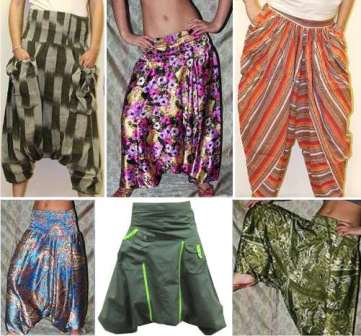
There are several differences inherent in Afghani or Aladdin pants, namely:
. loose tailoring, sufficient width of pants;
. greater depth and lowered landing;
. ethnic decorative elements;
. seasoned style.
Price: from 1100r to 4300r.
Also on sale are other national Indian clothes - Punjabi, various skirts, cholis, scarves, sundresses and much more.
Ethnic jewelry in stock - tiki, bindi, kajal, tattoo, earrings, monists, etc.
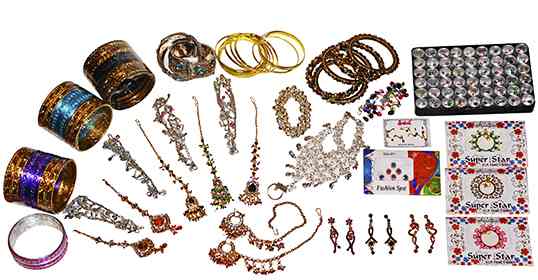
Also various bracelets for legs and arms.
Ethnic bags are different.
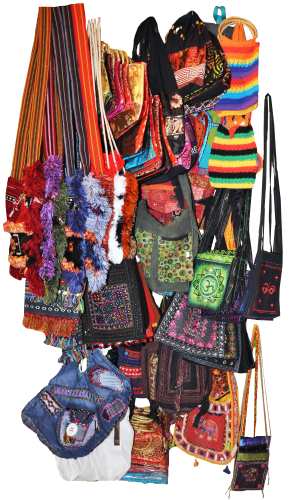
Price: from 530r to 3450r.
More than 30 types!
Also on sale are bags, wallets, key holders made of genuine leather!!!
Chinese clothes - almost any!
Something from history national chinese clothing. Traditions.
It is probably impossible to find a more conservative attitude to clothing than among the peoples of China. This is explained by the constant regulation of the styles and colors of national clothing by regular government decrees, under all Chinese dynasties from the very foundation of the empire. True, this applies mainly to men's clothing, women's dress it was rarely regulated, mainly under the Manchu and Mongol dynasties.
Any government, coming to power, immediately showed its strength and will in changing the styles of not only the clothes of officials, but also the clothes ordinary people. Chinese clothing changed constantly, but not radically. We will show general features and shapes Chinese clothes, which have always been preserved, right up to the present day.
General assortment of Chinese national clothes: robes, single and double-sided, shirts with hieroglyphs, with dragon embroidery, phoenix birds, sakura, etc. for example: short and long dresses, blouses, tops, kimonos, suits with trousers, children's clothing (from 6 months), etc.
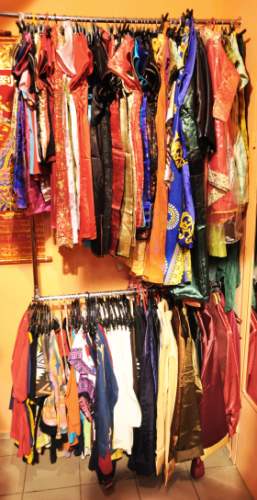 + available for sale Chinese fans for dancing, Chinese umbrellas.
+ available for sale Chinese fans for dancing, Chinese umbrellas.
Women's Chinese clothing.
Qipao or “jeongsan” is a traditional national Chinese dress.
A dress is a very special item of clothing, designed not only to add grace and elegance to a woman’s appearance, but also to create a unique, individual image its owner.
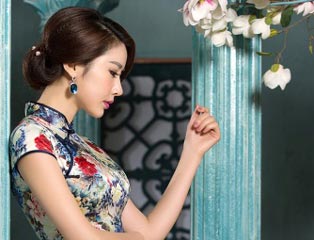
Among the variety of style solutions that fashion designers offer us today in incredible quantities, a Chinese-style dress has become that special classic that has unique charm mysterious East.
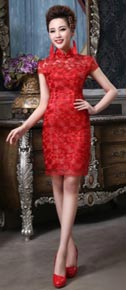
Is traditional clothes Manchus, known since the reign of the Qing dynasty. Nowadays qipao has become one of the most popular unofficial symbols China, national, casual and festive clothing of Chinese women.
(cheongsam, qipao) literally translates as “long dress”, it is the local dialect of the southern Chinese province of Canton. It was there that the West first became acquainted with qipao at the beginning of the 20th century. But in fact, cheongsam has been known since at least the 17th century, when the Manchu emperors established this style as the main standard of clothing for the entire Chinese population. in those distant times, they were worn by both women and men.
Characteristic features of the qipao cut.
National Chinese women's clothing qipao is an elongated robe dress. Its cut is characterized by a folded hem to the right, a small stand-up collar and two high, hip-length slits on the sides. The skirt is fastened with traditional Chinese knotted buttons.
Initially qipao It was characterized by a loose cut and long, wrist-length sleeves. The dress was considered the standard high culture China, it reflected all the fragility, femininity and grace Chinese women, united the historical past and future of the country.
![]()
From the history of qipao.
IN early XVII century in the Northern part of China, a very talented politician and simply brilliant military strategist, Aisinghioro Nurhaci, united the scattered Jurchen tribes into a strong “eight-banner” army, which, under his leadership, came to Beijing and overthrew the ruling Ming dynasty, giving birth to a new, Manchu Qing dynasty.
The Manchus, who represented the "eight banner" army in the most significant social strata, were called "banner people" or in Chinese - "qiren". And, according to the dynastic laws of the Qing Dynasty, after 1636, all Chinese (Han) who were part of the “eight-banner” system were required to wear qipao, that is, dressing in traditional Manchu costume, instead of national Chinese clothing. In case of violation of this law, the culprit faced execution.
At that time it looked like a loose straight dress with a shirt cut, even somewhat reminiscent of a spacious quilted robe.
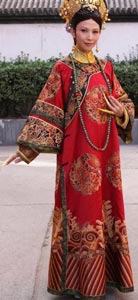
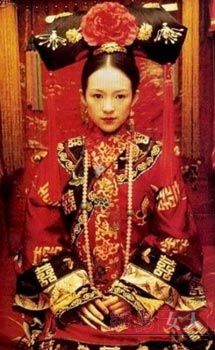
Over time, cheongsam ( qipao) have changed somewhat, and their cut has acquired a more familiar shape to us. The dresses were made from the highest quality silk, perfectly following the lines of the body, but only the hands, toes of shoes and the head remained open. The neck was covered with a high stand-up collar. This cut matched Chinese culture and the basic principles of its harmony.
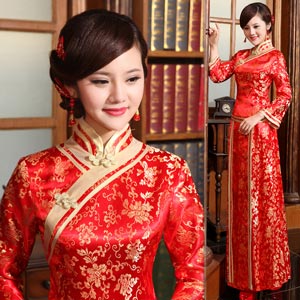

Gradually Manchurian everyday dress replaced traditional Chinese forms women's clothing and has become a recognized symbol of Chinese culture.
At the beginning of the 20th century, the Xinhai Democratic Revolution took place in China, as a result of which the monarchical system was destroyed, which accordingly made significant changes in ideology, morality and culture. Of course, changes affected both the shape and style of clothing. Struck by strict monarchical morality, Chinese women broke free, quickly “Europeanized,” and revolutionized Chinese fashion.
Of course, no one even thought of giving up qipao, but its cut was significantly updated. Disappeared long sleeves, the thin fabric began to fit tightly female figure, emphasizing all her graceful curves. And, despite all the sanctimonious attacks of the old conservatives, the dress continued to live, remaining the favorite clothing of Chinese women.

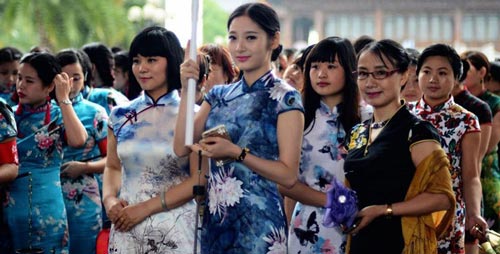
However, during the troubled years of the “cultural revolution”, the communists considered qipao a relic of the feudal-bourgeois past of the PRC, and for half a century this marvelous dress lost its exclusive role in women's clothing.
The period from the 20s to the end of the 40s of the last century gave qipao a chance for a new blossom. Europeans saw the dress. And it was then that the dress returned to the wardrobe of Chinese women and began its confident ascent to the catwalks of world fashion.
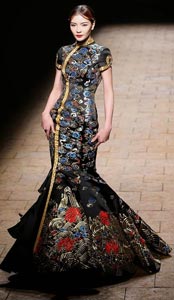


IN last decades qipao never leaves the collections of the most famous fashion designers in the world. It has become an inexhaustible source of inspiration for all fashion luminaries. What has won qipao the hearts of fashionistas all over the world? Of course, with its captivating, unique femininity, exotic flavor of the mysterious, incomprehensible East. A simple and at the same time refined strict silhouette made qipao a stylish asset of high fashion. The dress is extremely popular among Hollywood stars, show business representatives, socialites and simply among modern, fashionable women.
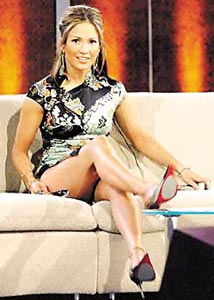
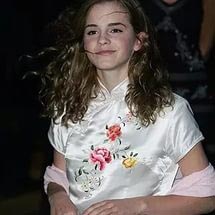

If we talk about Chinese women themselves, most of them currently give preference in everyday life to European style. However, during special moments, such as weddings, high society receptions, diplomatic receptions, National holidays, Chinese women proudly wear national Chinese dresses qipao. It is impossible not to note that they look simply amazing in them, very elegant, graceful and feminine.



How and with what to wear the national Chinese dress qipao.
So, you have finally decided to join the ranks of happy owners of seductive qipao, but the dress is not everything. For this outfit you should choose suitable jewelry and other accessories:
Under qipao Flesh-colored tights are best;
Linen and cotton shortened qipao It is acceptable to wear with straight or tapered trousers or jeans;
The best shoes for this dress are: classic shoes with medium heels;
Beads, pendants, chokers and other neck decorations are not worn with a qipao; the decoration is a traditional stand-up collar;
But almost any earrings are suitable for such an outfit, the main thing is not to forget about the grace and subtlety inherent in Chinese culture as a whole;
Bracelets on your arms are also welcome, but again, don’t forget about the general style;
In addition to this outfit, you can choose a traditional Chinese bag with bamboo handles;
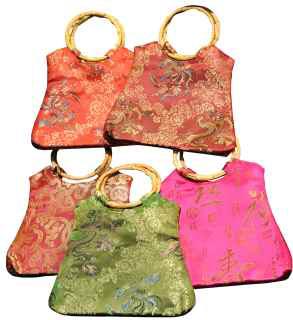
 Chinese bags - price: 530 rub.
Chinese bags - price: 530 rub.
A good accessory would be a small fan or a small sun umbrella.
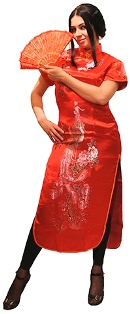


In our ethnic clothing store you can buy qipao various colors and sizes!
Price: 3100 rub., 4100 rub.
There are always dresses, blouses, tops in Chinese style on sale, almost any colors and styles.
Men's national Chinese clothing. Suits, jackets. Costumes for practicing tai chi, qigong, yoga.
Jacket ( kurma) or caftan (below the hip), (half-caftan) - Gua Tzu (Phao Tzu), - Magua Tzu(short), fur coat (caftan lined with fur) - phiao, outer shirt - Shan Tzu.
General basic clothing details.
Chinese single-breasted shirt with five eyelets, wide sleeves and three cutouts on the sides and back, sometimes with a stand-up collar - ling-tzu.
Cuffs are usually worn by civil servants.
The clothes of officials can be cherry-colored, with embroidery of animals or birds on the chest and back, which ones depends on the rank.
The predominant color of kurma is black, kaftan is any color except green and scarlet ( feminine colors), usually blue.
The outer shirt is usually lemon or blue for winter and white for summer.
Underwear jacket - traditionally used as home or summer clothing. The left floor is at the top, from the neck buttons it goes under the right armpit and goes down, fastened with buttons along the entire length.
Pants are regular straight pants made of cotton or silk with a belt.
Robes - worn at home, the colors have national colors and designs and depend on the class, they belong to men's clothing, but sometimes they are also worn by women.
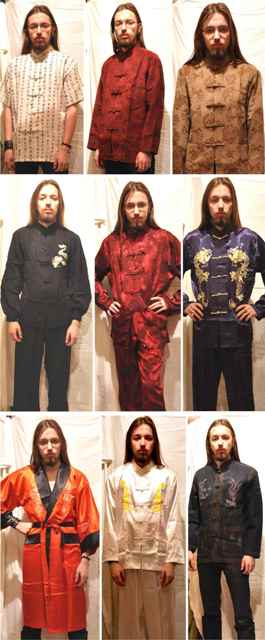 - more photos of Chinese clothes!
- more photos of Chinese clothes!
Children's Chinese national clothing is made according to the adult type - for girls - from 2 years, for boys from 6 months. and up to S - size.
Chinese umbrellas - different colors.

Price: from 480r to 680r.
Different kinds tunic with ethnic patterns (long, short, with or without a belt, with garters). The variety of drawings is more than 15 types.
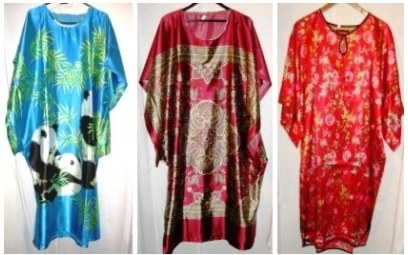
Price: from 2100r to 3100r.
Also available for sale Bali ethnic clothing- pareos and blouses, different styles and colors - more than 20 types.
Ethnic shoes. Oriental shoes
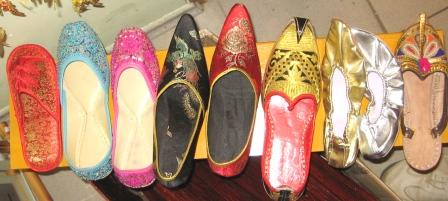
Also on sale are shoes made of genuine leather and felt (Mongolia).
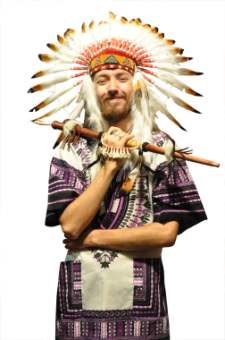
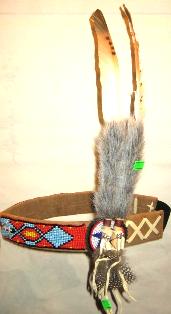
Indian hat. Price: 4850r and 1450r.
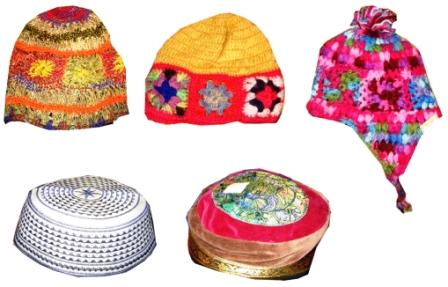
- Indian turban.
A large selection of belly dance costumes - with skirts and trousers - almost any colors, styles, sizes, different price categories.
By visiting our ethnic clothing store, you can buy a belly dance costume and various accessories: belts with coins, bracelets, scarves, canes, ankle bracelets and much more. The store's assortment ranges from simple costumes for learning belly dancing to ornate costumes for performances.
Price: from 2100r to 6300r.
There are children's costumes for oriental dance from 6 to 10 years old - with trousers, from 10 to 14 years - with trousers or a skirt.
Indian and other ethnic dance jewelry, earrings, rings, dance canes, dance fans, bindis, tattoos, kajal, tiki, shoes and many others.
A little about ethnic clothing.
Ethnic clothing or National clothes is an indispensable attribute of any society. Having gone through centuries of experiments, each people chose the most comfortable type of clothing for themselves, depending on the climate, occupation, available materials, craft culture and others. natural factors. Later, with the development of society, clothes began to be made not only for protection from climatic troubles, but also as an object of aesthetics, adding elements decorative creativity, where each nation emphasized its identity and individuality. Modern fashion designers, instead of reinventing the wheel, they have long been using ethnic clothes in their creative fantasies, constantly studying and detailing the entire anthology of national clothing different nations, using it in their new collections stylized suit.
Ethnic clothing will always emphasize your individuality and attractiveness, while introducing the subtle charm of a unique aesthetic taste. You will find few things in stores that can so subtly express your originality and charm, without the colossal expenditure of labor or money, as ethnic style clothing. Currently ethnic wear also moved on and took a worthy step in the category youth clothing. Ethnic style clothing will always be one of the most wearable items in your wardrobe, both men's and women's, especially in combination with ethnic jewelry .
Currently ethnic wear, for example in Moscow, is used not only for wearing on the street or at home. It is a mandatory subject for practicing some eastern practices ( yoga, tai chi, reiki etc.), and, naturally, is used for training in many styles of martial arts. Also ethnic wear, V in this case Chinese and Japanese, decorates the ceremony of drinking tea and preparing and serving sushi.
Professional tailoring of any ethnic clothing.
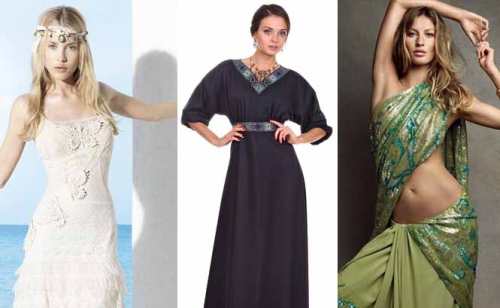
Custom made ethnic clothing- more details.
If you want to buy in Moscow ethnic clothes or ethnic style clothes, at the same time supplement it ethnic jewelry, or buy costume for belly dance (oriental dance), or just visit ethnic store in Moscow, then in the contacts section the detailed address of the store, map and how to get there are indicated. Microdistrict "Mitino" is the first multi-storey building at the exit from the Moscow Ring Road or 300m from the Volokolamskaya metro station.
The history of ethnic style is rooted in the history of every single nationality on the planet. If we talk directly about ethnic clothing, then your big way she started on fashion catwalks after showing a collection in oriental style in 1911 by fashion designer Paul Poiret, inspired by the ballet “Scheherazade” staged by M. Fokine. However, in the life of ordinary people there is a trend of borrowing elements traditional costume(and often the entire costume) among different nationalities entered a little later, in the 60s. Freedom-loving hippies contributed to this. It was they who, in their desire to reject the accepted principles of society, brought back to life the then unfashionable floor-length skirts, tunics, loose-fitting trousers, etc., not to mention numerous accessories. This trend was then picked up fashion houses and one of the first was the legendary Yves Saint Laurent, whose shows first shocked critics and then found their recognition.
Wide use
Ethnic wear is not limited to any one preference. The traditions of all countries from East to West, from India to the American Indians are woven into it. On the red carpet you can always see dresses in the Greek style, and winter in all countries where it snows is associated with Scandinavian sweaters with knitted deer and snowflakes. Ethnics have firmly entered our lives, although we don’t even notice it. Many ethnic shops are opening, and this style is incredibly popular in the interior. It is characterized by the following elements:
- natural materials (wood, stone);
- ritual masks, figurines of deities and other decorative elements;
- ceramic tableware;
- ethnic musical instruments.
Fabric designs play an important role in both ethnic clothing and interior design. These can be either the usual paisley or more exotic African patterns or Uzbek prints.
How to be in trend?
The basis of ethnic clothing style is harmony with yourself and the world around you. Therefore, natural comfortable fabrics and styles that do not restrict movement are used. Clothing is decorated with embroidery, appliqué and other decorative elements. Accessories are also made from natural materials: wood, thread, shells, bones. Nowadays, many similar products are sold in online stores, where you can also find suitable shoes and bags that will complement your look.
Today, ethnic music is experiencing another peak in popularity. Boho style is especially trendy. This is a somewhat romanticized ethno, or more precisely, a bohemian style plus ethno. However, the principles are the same:
- practical style;
- loose fit;
- bright color palette;
- wide range of decorative elements.
Fortunately, today, if you want to diversify your wardrobe, everything can be easily purchased at an ethnic store. But even if you rummage through your grandmother’s chest or on the mezzanine, you will be able to find a lot of interesting things - fabrics, clothes, jewelry. Don't be afraid to use it! Ethno is exotic, self-expression, naturalness and originality. That is why this style is especially popular among creative personalities and free-spirited people. Just don’t forget that moderation is good in everything and it’s important not only to express yourself, but also to be appropriate in the given circumstances. Therefore, no matter how comfortable and beautiful an Indian sari is, on a Caucasian girl in the center of Moscow it will look at least strange.
WITH folklore motifs We have been dating almost since the cradle. Grandmothers' songs, mother's tales, ditties, jokes and even jokes. However, only as we mature do we realize the value of this knowledge. Fashion never stands aside folk motifs. Despite her capriciousness, and sometimes even pretentiousness, she “squeaks” loudly when it comes to ethnic roots.
The birth of style
Despite the fact that it is deeply “folk”, in the history of fashion its legislators are considered to be the hippie movement, which arose in the 60s of the 20th century. Followers of this trend dressed under the motto: “As natural and comfortable as possible.” Loose fit natural fabrics natural shades, various kinds of embroidery, fringe and even fur trim - these are the main features of this style.
However, not all so simple. In any art, historical aspects play almost main role. After all, in fact, we owe the origin of ethnic trends to travel and the discovery of new lands, various conquests, invasions and enslavements that led humanity to a certain symbiosis.
Distinctive features
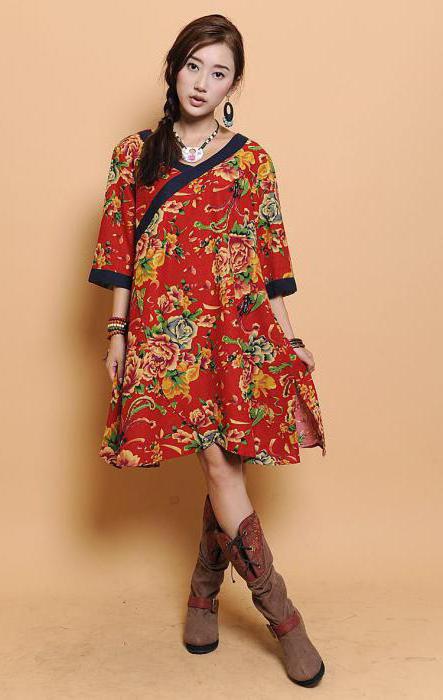
The ethno style in clothing has come to us in a modified aspect. Modern fashion designers actively use elements of folk costumes different countries. After all, cocktail dresses in the style of , a classic suit in the style of a Japanese kimono or autumn bright ponchos in the image of Mexican traditions are perfect in their simplicity! It definitely becomes clear that one of the distinctive features of this style is volume. Light, flowing fabrics seem to envelop, trying to protect and make a woman more fragile. To emphasize this look, only natural fabrics are suitable. But the color scheme has changed today. These are no longer faded colors, but bright, rich shades with ethnic patterns and unimaginable color combinations.
Mysteries of the peoples of the world
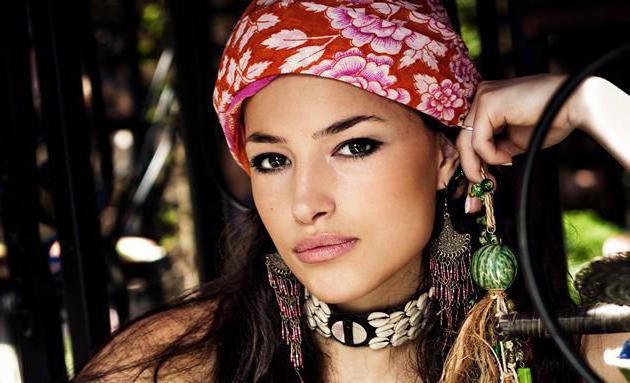
The longer a people exists on earth, the deeper its roots, the more diverse its folklore basis. This is an indisputable fact, so let's figure out how this or that nationality contributed to the formation of ethno style.
Slavic melodies
It is impossible not to recognize our native clothes in modern trend fashion. Simplicity in the cut of clothes, undeniable comfort and soft natural fabrics that are pleasant to the body. Convenience and coziness. Fashion has brought us back bright embroidery, floral large prints and gorgeous airy lace. This season is dominated by bright colors nature: the color of spring foliage, ripe raspberries and frost-beaten viburnum. Well, what about without accessories? Large beautiful beads or an exclusive Pavloposad scarf on fragile shoulders - and an image beautiful swan princess ready.
Indian mystery
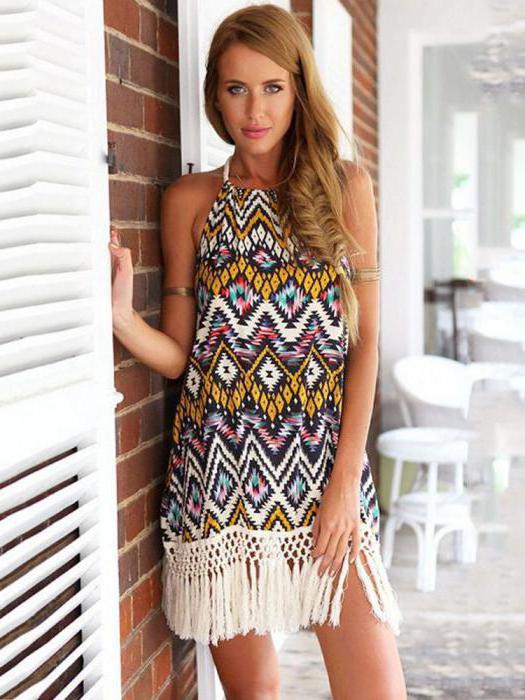
Above is a clear picture of the ethnic style of clothing (photo taken in 2015).
The fairy tale land of Aladdin presented quite large clothing ensembles in ethnic style to the fashion collection. Airy saris, trousers a la "Aladdin", cropped tops and various tunics - this is the heritage that came to us from the banks of the Ganges River. At least one of the items listed is in every wardrobe. modern fashionista. And it doesn’t matter at all that your clothes don’t have an ethnic provincial design on them; a long wrap skirt, which is so easy to wear, will be enough. By the way, skirts in this style are a hit of the summer season.
Wild Africa
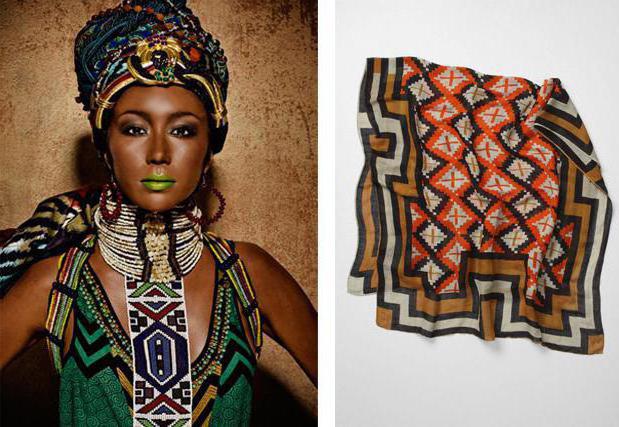
Bright and aggressive colors African continent not yet fully accepted by society. But for fashion there is plenty to roam. Rich colors wild African nature, tribal features of prints and light natural fabrics - also that fashionable character! But accessories should come first. Decorations made of wood, metal, and glass are very popular this season. Wide bracelets combined with massive earrings will complement your self-affirming image.
Distant America
The country's ethnic culture has long become a representative of street fashion in all corners of the planet. Jeans, shirts in big cage, leather items, fringe - all this can be combined together or used in conjunction with other things. Wide ones go well with this look. leather belts with a large buckle, feather earrings, cowboy hats and bags trimmed with fringe.
Stylist tips:
“The image in the ethno style does not tolerate excessive diversity. IN modern fashion you need to know when to stop. Dressing using only one style of ethnic clothing is not correct. Add one ethnic element and your look will be unique.”
Ancient Greece
Femininity and democracy are the main principles of the Greek style. Dresses in ethnic style with high waist floor-length, loose tunics and strappy shoes have occupied a wide niche in modern fashion. There is probably no woman who would not like a dress in the Greek style. Surprisingly, they are designed in such a way that they cover what is not needed to be seen and emphasize all the advantages of the figure. This is the reason for their popularity to this day. They say that everything new is long forgotten old. Did you know that we owe asymmetry in attire to the Greeks? Dresses in the Greek ethnic style are suitable for both an evening out and a street promenade.
Cleopatra's Legacy
Egyptian civilization brought to the treasury fashion ideas their own “highlights”.
Simplicity, geometricity, clear lines - this is the legacy of ancient Cleopatra and Nefertiti. on thin straps, a cloak that exposes the shoulder, surprisingly always looks impressive. This style is used in their shows by Givenchy, Emilio Pucci, Donna Karan. Primary colors: blue, red, white, turquoise.
Egyptian models always complement gold metal accessories with bright stones.
The main thing here is “not to overdo it.” The outfit should look organic. Don't forget about bright makeup.
Land of the Rising Sun
When people talk about Japan, the first things that come to mind are sakura, kimonos and geishas. However, let’s skip unnecessary definitions and talk about kimono. This type of clothing has always been very popular in Japan. The Land of the Rising Sun has always attracted originals in the fashion industry, which, of course, could not but affect fashion trends. Japanese traces in ethnic clothing, like Gulliver's. Gorgeous dresses, classic suits, kimono-style tunics... And how many fashionable accessories Japanese civilization brought into fashion! There are fans, umbrellas, hats, and hairpins.
Characteristics of clothing
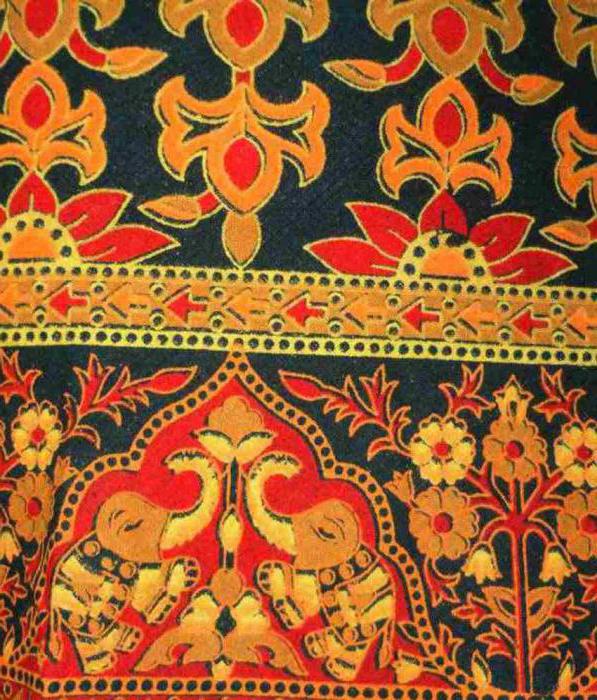
Afghani. loose fit. Came into fashion from Afghanistan. National men's clothing. Similar to the trousers of the Cossacks. The pants are suitable for tall, slender girls and those with a large bust and narrow hips.
Afghani should be worn with high heels or comfortable open sandals.
Qipao. Stylish Chinese dress. Creates a unique oriental image. The dress is distinguished by a strict silhouette, a stand-up collar, a wrap on the right side, and many decorated details and edgings. Originally the qipao was very long. Now there is a midi and even mini qipao. The outfit should be worn with shoes high heels. This dress is made exclusively from silk or satin in bright colors.
Kimono. Japanese ethnic clothing style is not just clothing, it is a kind of philosophy. The national Japanese outfit inspires fashion designers to create unique female images. It is simply impossible not to recognize him. Clothes in Japanese style has an unusual cut. It is distinguished by a correct silhouette, one-piece sleeves, the presence of many small buttons, and a wide belt. Do-it-yourself ethnic-style clothing is made by Japanese women quite quickly.
Shoes
This is always the main component fashionable look. You can't hide behind a long skirt here. The style is characterized by simple and comfortable shoes. The ethno-Slavic look is characterized by ballet flats and low-heeled shoes. For Indians, slippers embroidered with sequins or rhinestones are good. Sandals are suitable for Greek and Egyptian styles. Sneakers, moccasins, and cowboy boots are characteristic of the American ethnic group.
Accessories
Where would we be without accessories? These cute trinkets will help make your look more complete. Accessories are divided into several types:
- textile (shawls, scarves, ponchos, capes, pareos, stoles, shawls, pashminas, knee socks, openwork shawls, etc.);
- jewelry made of wood (characteristic of African, Slavic ethno);
- stone jewelry (characteristic of African and Greek ethno);
- jewelry made of different metals (typical of Greek and Egyptian ethno);
- leather accessories (typical of American ethno).
Combination with modern fashion
There are several rules:
- You cannot combine incompatible things (for example, futurism and clothes in ethnic style).
- To implement the idea of ethno in modern clothes One thing is enough to highlight your individuality.
- Choose your shoes and accessories carefully. This will make your look more complete.
Who should wear this style?
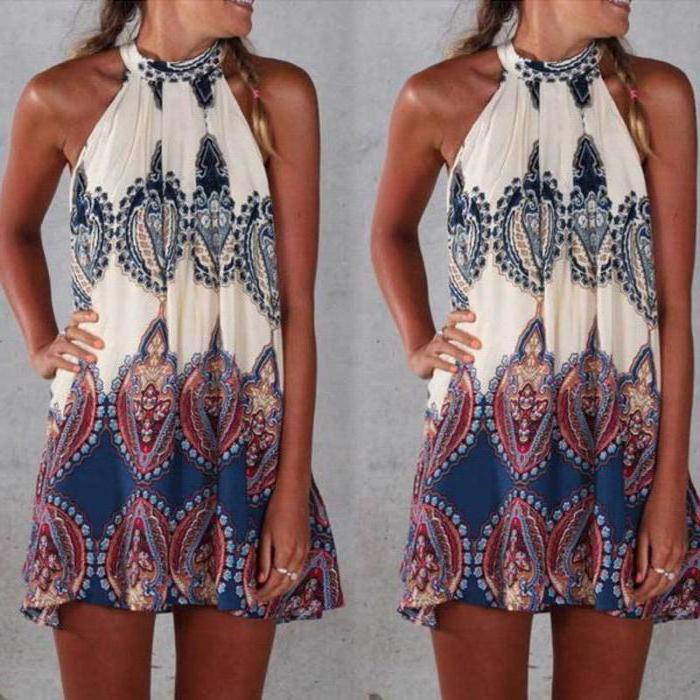
People who position themselves in this style are mysterious, great originals, and love freedom in everything. If this characteristic suits you, you can safely dress in clothes of this style. If you are not ready for people to perceive you this way, then stylists recommend diluting your outfit with ethnic elements.
Epilogue
In fact, talking about ethnic style in clothing and its role in cultural life a person can be indefinitely. Despite his advanced age, the ethno style of clothing leads a large army of young fans. The masterpieces of designers from world fashion houses still amaze with their irrepressible imagination, which boldly synthesizes the traditions of their ancestors with modern trends. Most likely, the ethno-style in modern fashion will be popular for an infinitely long number of years. After all, there is an incredible amount of uniqueness in it.
– a style in which sets of clothing reproduce the features national costume a certain people (ethnic group). The main thing when compiling a set is to use the cut, materials, shades, ornaments, decor, characteristic of the outfits of a particular nation.
Historically, each group of people, united by long-term cohabitation in a certain territory, had its own traditions and customs, which were also manifested in the manner of dressing.
Main directions of style
- Egyptian motifs
Colors. White, blue, turquoise, gold, yellow. Possible inclusions of black, orange, green, red colors.
Prints. Geometric patterns (in particular, hieroglyphs), engravings with images supernatural creatures, gods, pharaohs, pyramids, as well as images of scarab beetles, lotus flowers, stylized images of animals.
Materials. Linen, silk, leather, fur, wool, as well as combinations of fabrics, for example, silk and suede, linen and velvet. Metal plates, fringe, and embroidery are used as decoration.
Cloth. The cut is characterized by straight lines and geometric figures: rhombus, triangle, trapezoid. Men's clothing with Egyptian motifs includes straight-cut tunics or with draperies under the chest line or on the hips, wide long ones, and loose-fitting pants. The women's wardrobe contains richly decorated floor-length ones made of heavy fabrics with various designs, as well as tunics, tops and one-shoulder dresses.

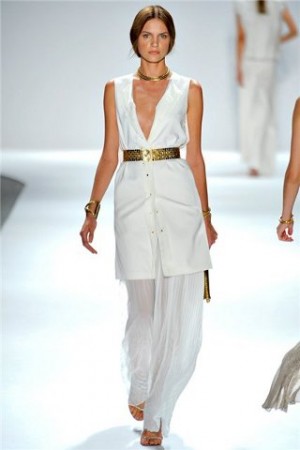

Accessories. Wide belts around the waist, snake bracelets, hinged, rings, necklaces made of metal plates, voluminous beads, tiaras. The headdresses are presented in bright colors, tied in various ways with grace.
Shoes. Typical shoes for men and women are .
Makeup. Image in Egyptian style help create thickly lined eyes and eyebrows, dark foundation. For men, makeup is only allowed on stage or at themed events.
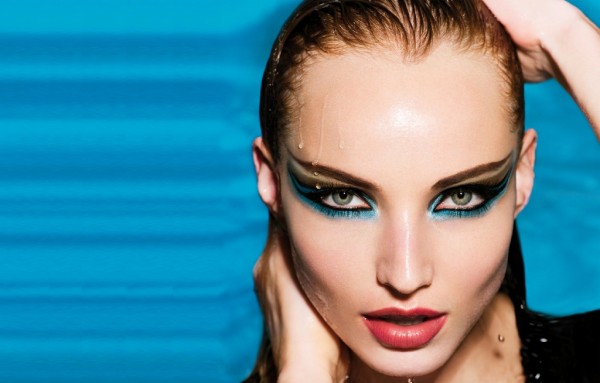
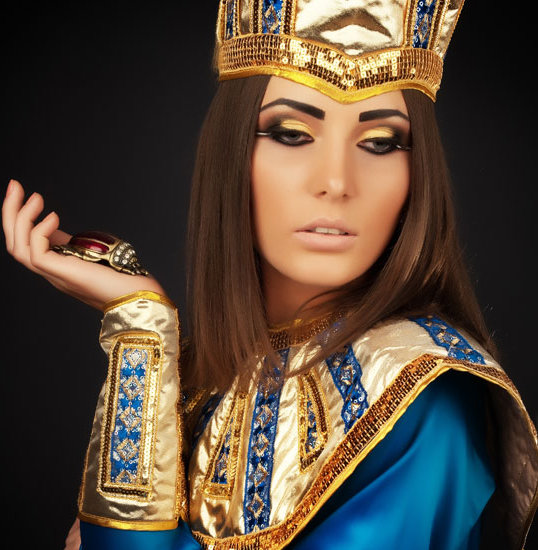
Hairstyle. Straight hair middle length, thick bangs. Preferred color is brunette.
- Greek motifs
Colors. The main ones are white, gold, blue, .
Prints. Floral patterns, in particular those reminiscent of tree branches.
Materials. Light translucent flowing fabrics such as chiffon, silk, fine knitwear.
Cloth. A characteristic feature of Greek-style clothing is asymmetry, which manifests itself in the cut of the hem of a dress or outfit that exposes one shoulder. Men's clothing with Greek motifs includes loose-fitting trousers, tunics (in ancient times chitons), complemented by a belt and a rectangular strip of fabric draped over one shoulder. In the women's wardrobe there are dresses of medium length or floor length - with a high waist and an emphasis on the chest, flowing to the ankles, dresses with a V-neck.
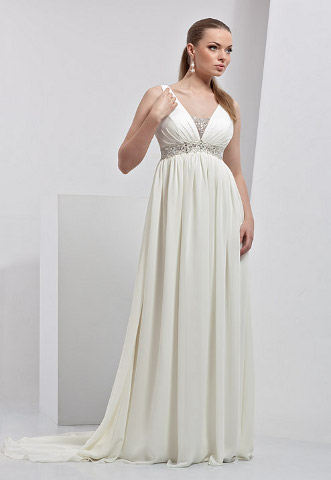
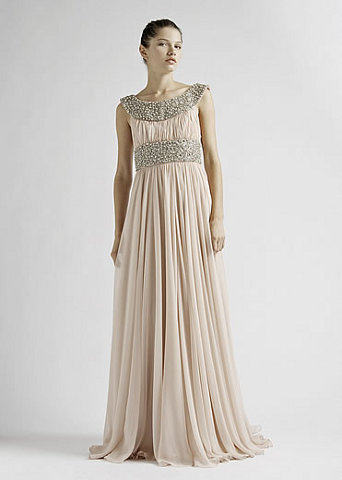
Accessories. Wide belts around the waist, bracelets, earrings, pendants, tiaras and hair clips, often consisting of links and complemented by internal ornaments in the form of feathers, leaves, various weaves, etc.
Shoes. Sandals decorated with numerous straps and weaves. Open-toed stilettos are also allowed in women's wardrobes.
Makeup. Natural, discreet: peach or soft pink blush, gloss or pastel lipstick.
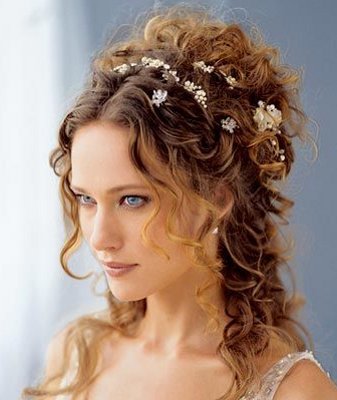
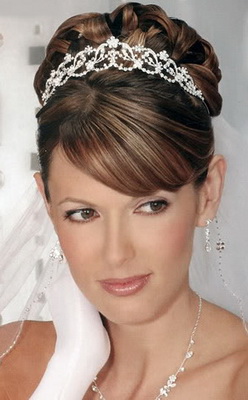
Hairstyle. Hair styled in curls and gathered under a headband or tiara; various kinds of braids, turning into loose hair. Hairstyles in the Greek style are decorated with flowers.
- Indian motives
Colors. The main shades are brown, beige, sand, burgundy, terracotta. Blotches of black, blue, white, grey, green, yellow are used.
Prints. Schematic images of supernatural creatures, Indians and Indian paraphernalia (feathers, bison skulls, wigwams, etc.), stylized images of animals and birds.
Materials. Denim, cotton, leather, wool, knitwear. Fringe, embroidery, feathers, fur, and metallized elements are used as decoration.
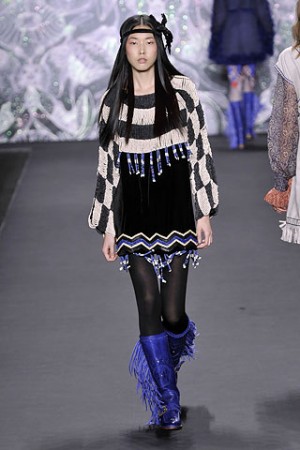
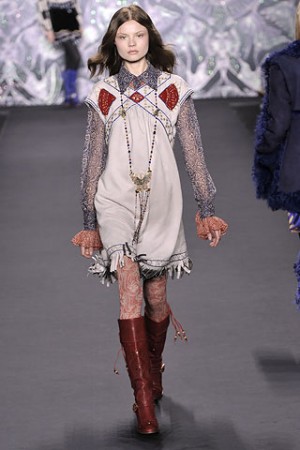
Cloth. A characteristic feature of clothing in the style of Native Americans is the obligatory presence of prints, stripes or fringe. Men's wardrobe includes shorts, denim shirts, ponchos, with fringes and prints, loose fit. Women wear tops with fringes, short pants, shorts, including tanned leather, tunics and loose dresses and skirts of various lengths.
Accessories. Belts and belts on the hips, earrings made of beads and feathers with Indian symbols, a large number of bracelets and beads. Scarves and wicker headbands are also used in women's wardrobes.
Shoes. Typical shoes are low and high with fringes and stripes. In the women's wardrobe there are also wicker sandals; shoes on a wooden platform, and with fringe and various weaves are allowed.
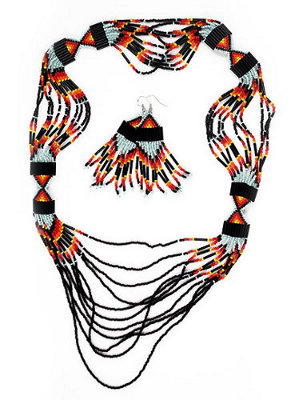
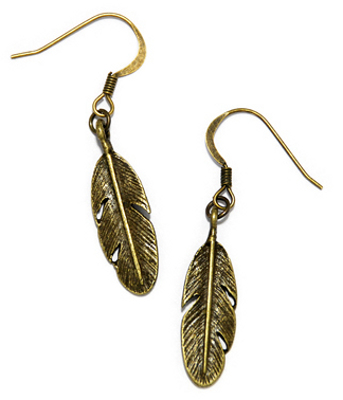
Makeup. Natural, discreet.
Hairstyle. Long, casually flowing hair, sometimes with several braids.
- Russian motives
Colors. The main colors are red, white, gold, blue, green, terracotta, black.
Prints. Floral, geometric, animalistic and floral ornaments, images of birds.
Materials. Linen, wool, cotton, silk, satin, velvet, cloth, . Fur, fringe, stones, beadwork, etc. are used as decoration.
Cloth. A characteristic feature of clothing with Russian motifs is the use of embroidery, colorful printed patterns, and buttons. In the women's wardrobe there are A-line sundresses, bell skirts, Long Dresses loose-fitting with a richly decorated hem, padded warmers, jackets and vests with fur trim with buttons or wide open, shirts. Men wear cotton and linen shirts, caftans, uniforms, double-breasted and single-breasted with a stand-up collar, and loose-fitting trousers. Both wardrobes contain fur coats made of sable, ermine, marten, black-brown fox, etc. They are decorated with velvet or satin, decorated with fur frills. Can be worn unbuttoned or tied with textile or leather laces.
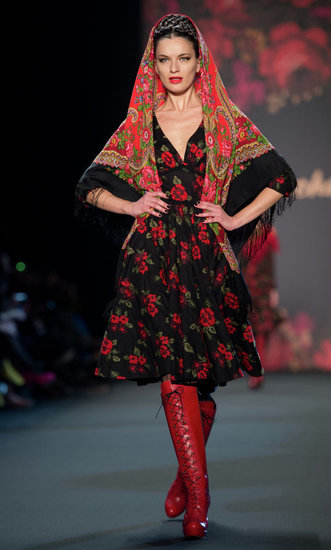
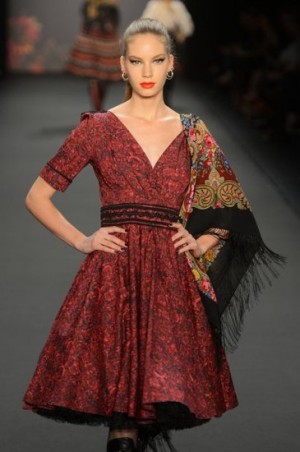
Accessories. Wooden bracelets, rings, pendants, with embroidery and beads, earrings with Slavic symbols and images of animals and birds, embroidered textile narrow or wide belts, mittens. Headdresses include boyarka hats, yarmulkes, kabardinkas, caps, earflaps, etc. Women can cover their heads with scarves and scarves, wear hats made of fur or with a fur trim.
Shoes. Felt boots, morocco boots, bast shoes. The women's wardrobe also includes wicker sandals, ankle boots with fur trim, and pumps.
Makeup. Red cheeks scarlet lips, long black eyelashes and thick eyebrows.
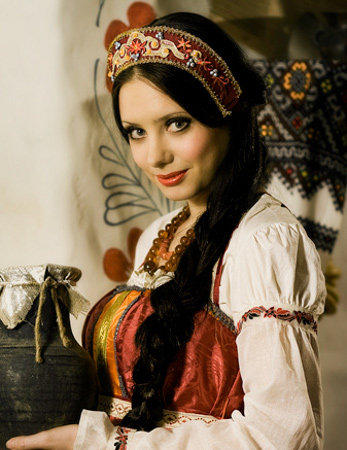
Hairstyle. Varieties of the classic braid with ribbons or flowers woven into it.
- Indian motives
Colors. The main shades are orange, eggplant, turquoise, blue, pink, purple, red, crimson, golden, green, olive.
Prints. A typical pattern is a pattern, geometric patterns.
Materials. Silk, linen, cotton, wool, chiffon, satin. Fringe, embroidery with beads or threads, decoration with stones, etc. are used as decoration.
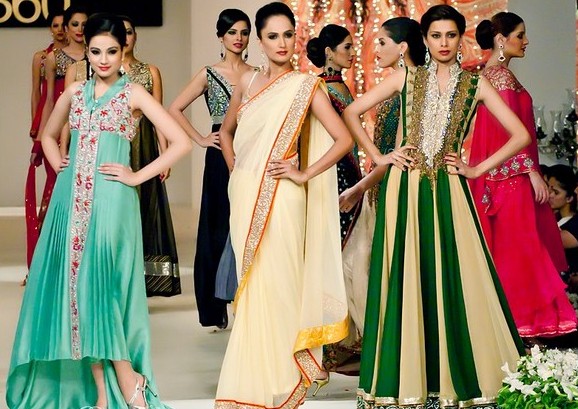
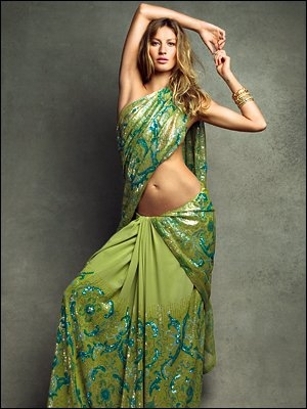
Cloth. Characteristic features of women's clothing in Indian style are layering and asymmetry, which is manifested in the cut of clothes on one shoulder. Most outfits are draped in a variety of ways. In a woman's wardrobe there are saris (fabric, in a special way wrapped around the body), flowing long dresses and skirts, harem pants complemented by short tops, tunics. Men wear knee-length frock coats with buttons, long shirts, and loose-fitting trousers.
Accessories. Large jewelry - bracelets, long earrings, beads, necklaces, rings, tiaras, scarves, and nose piercings. The materials for the products are mainly metals, beads, bright precious and semiprecious stones. Women can cover their heads with scarves, men can wear turbans. The accessories are characterized by floral motifs.
Shoes. In the women's wardrobe there are sandals and sandals, in the men's wardrobe there are sandals and closed shoes reminiscent of.
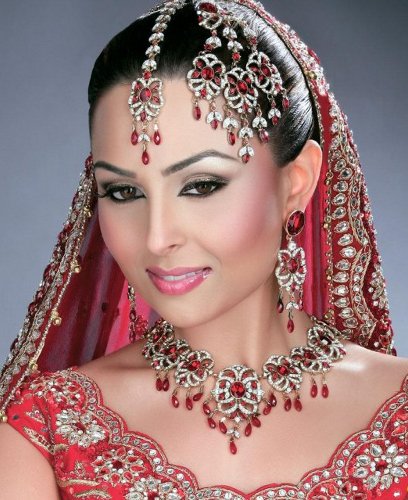
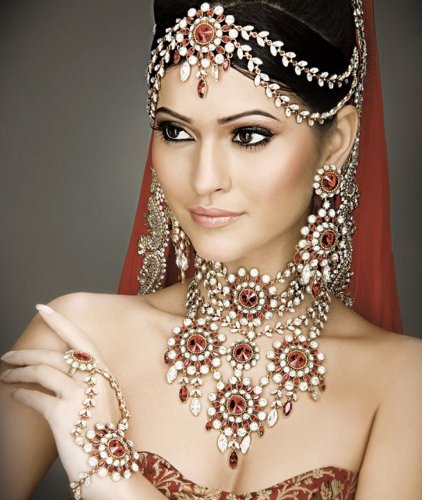
Makeup. Eyeliner and eyebrows, dark shadows, blush, red lipstick, dark foundation, bindi.
Hairstyle. Loose hair, styled in curls, or a smooth bun.
- African motifs
Colors. The main shades are sand, khaki, blue, red, terracotta, coffee, white and their combinations.
Prints. Catchy, sometimes blurry or sketchy ornaments, geometric, floral, animalistic and floral patterns.
Materials. Leather, linen, cotton, silk, wool. Fringe, furs, stones, and wood are used as decoration; fangs and claws of animals, feathers and claws of birds.
Cloth. A characteristic feature of African-style clothing is the use of numerous prints and the absence of plain items. The women's wardrobe includes shorts, trousers, sundresses, dresses and skirts of various lengths, tunics, cardigans, and short tops. Men wear shorts, loose-fitting trousers, complemented by medium-length shirts with wide sleeves, and textile jackets with fur trim. Various draperies are possible. Clothing is decorated with stones, fringe, various weaves, metallized or wooden elements.
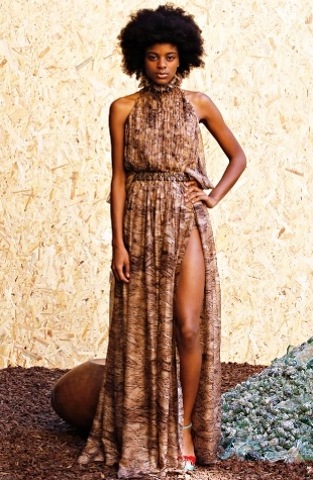
Accessories. Wooden or metal bracelets, massive earrings and necklaces made of natural materials, pendants made of fangs and claws of animals, feathers and claws of birds, various amulets, multi-layered multi-colored beads are used as accessories in men's and women's wardrobes; headbands and scarves tied in various ways; belts and waist straps.
Shoes. Men wear wicker shoes; sandals and wedges are allowed in women's wardrobe.
Makeup. Eyeliner and eyebrows, blush, red lipstick, bright shadows.
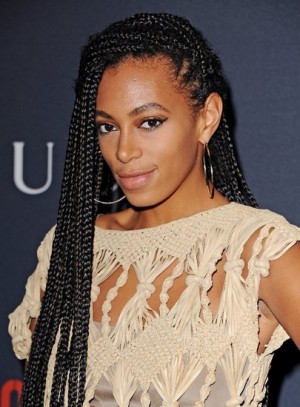
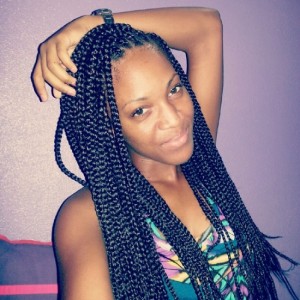
Hairstyle. African braids; voluminous hairstyles that create a feeling of carelessness.
- Japanese motives
Colors. Traditionally, the main thing in clothing is the symbol of color. The emphasis is on shade accuracy. The main colors are black, white, red, pink, orange, yellow, gold, indigo, green.
Prints. Each piece of clothing is decorated with floral (the most common are sakura, chrysanthemum), plant, animalistic or geometric patterns.
Materials. Silk, linen, cotton with satin weave.
Cloth. A characteristic feature of clothing in the Japanese style is multi-layering, following silhouettes in the form of a trapezoid, triangle or rectangle. The Japanese-inspired wardrobe includes kimonos, tunics and shirts with short or long puffy sleeves; possible high collars, covering the neck, loose-fitting trousers, jackets. Women also wear tight long dresses and skirts, and capes made of thick fabrics.
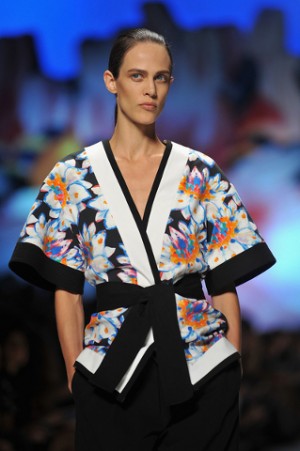 m
m 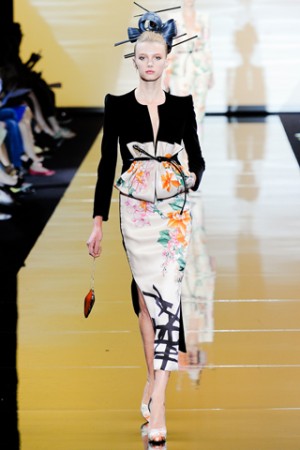
Accessories. As accessories in men's and women's wardrobes there are wide belts or belts at the waist, colored scarves, wooden bracelets, brooches in the form of flowers, plants, birds.
Shoes. Typical shoes are traditional Japanese sandals with wooden soles. In women's wardrobes, shoes resembling loafers are allowed, in men's wardrobes.
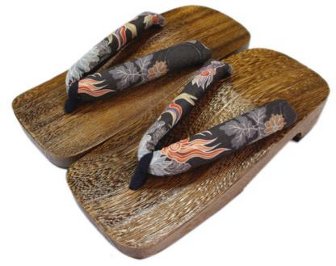
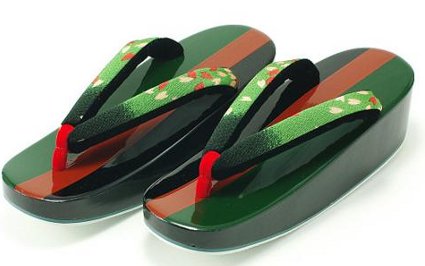
Makeup. Very light foundation, outlined eyes and eyebrows, soft pink blush, scarlet lipstick.
Hairstyles. High hairstyles, decorated with hairpins, wooden chopsticks or combs with fresh flowers or floral prints.
The emergence of ethnic style
In the 1910s French Paul Poiret was one of the first to create collections in ethnic style. In 1910, the Russian ballet “Scheherazade” by S.P. was staged in Paris. Diaghilev. Sketches for the costumes were prepared by artist Leon Bakst. In 1911, Paul Poiret, inspired by the production, created a women's collection in oriental style. He prepared a costume party, “The Thousand and Second Night, or a Celebration in Persian Style,” at which he appeared in the guise of a sultan: wearing a satin robe worn over a tunic and a turban as a headdress. The guests were dressed in silk harem pants, richly decorated velvet vests and long skirts wide cut.
In 1912, Paul Poiret held a costume party in antique style. The guests appeared in stylized Greek outfits.
In the mid-1910s. Paul Poiret, inspired by Russian culture and traditions, created the Kazan women's collection with Slavic motifs. It included sundresses, shirts, kokoshniks, embroidered scarves, and red morocco boots. The designer used fur, fringe, beadwork, etc. as decoration.
1920-1930s
In the 1920-1930s. created collections using ethnic motifs, in particular, embroidered dresses with Slavic ornaments.
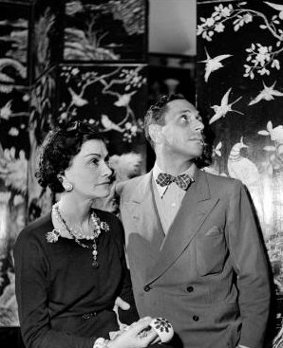
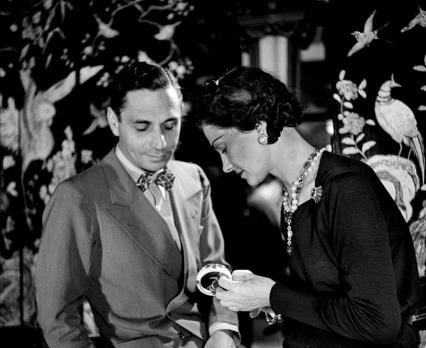
Since 1922 Fashion house began producing costume jewelry using Russian and oriental motifs, as well as with the symbols of the French Middle Ages and the Italian Renaissance. In 1929-1937 the collection was created by the Italian Duke Fulco di Verdura, who repeatedly turned to the traditions of his native Sicily. In 1930, the jeweler made a bracelet for Chanel in the form of a one-piece ring made of silver coated with creamy white enamel. The decoration featured a Maltese cross inlaid with precious stones.
1940-1950s
In 1946, Philip Miller, inspired by Native American culture, founded . In his project, he decided to fully reflect the centuries-old culture and traditions of the indigenous population of America. Shoes were made by hand; raw materials for them were purchased from the leaders of Indian tribes. Distinctive feature Minnetonka Moccasin was the fringe that adorned most models. Since 1960 moccasins began to be decorated with the “Thunderbird” print - an image of the mythological thunderbird, the god of thunder and lightning, which was a talisman for the North American Indians.
1960-1970s
At the end of the 1960s. The style became widespread. Representatives of this trend chose clothes bright colors with large ornaments, used a large number of decorations created from natural materials manually. The hippie style inspired designers to create ethnic sets with colorful patterns, cut, shades inherent in the costumes of certain nationalities.
In the summer collection of 1967, he turned to African motifs. The designer presented dresses, skirts, blouses and tops with eye-catching floral prints. Images have been supplemented wooden bracelets, multi-colored multi-layered beads, headbands and scarves. Subsequently, in his collections, Yves Saint Laurent turned to Chinese, Peruvian and Tibetan motifs. The designer used straw, wood, and glass as decoration.
In 1976, the Fashion House presented the women's fall-winter 1976/1977 collection in the Russian style. It included bouffant skirts high-waisted, sheepskin vests, printed coats, painted scarves, fur-trimmed hats.
1980-1990s
Since 1981, it began producing fabrics for upholstery using Indian pattern Paisley. In 1988, the brand began presenting men's and women's clothing collections in ethnic style.
In 1984 he registered the Rifat Ozbek brand. For each season, he began to create women's collections in ethnic style: with Oriental, African and other motifs.
Presented a Christian Dior collection inspired by Egyptian traditions. It included sheath dresses and dresses with a narrow bodice, complemented by voluminous hemlines. The designer also used various ways draperies. John Galliano suggested wearing outfits with stoles and voluminous capes. The geometric cut collection was made in gold, silver, turquoise, olive, white, sand, black and included splashes of green, orange and purple flowers. The designer used geometric prints and images of pharaohs as patterns. Models took to the catwalk with brightly lined eyes, numerous bracelets and earrings, and headdresses imitating heads. Egyptian gods and in Cleopatra-style dresses.
In 2010, the brand presented a women's spring-summer 2011 collection in ethnic style, inspired by the culture of the indigenous people of America. created long dresses and skirts, jackets, tops and trousers with fringes, decorated with animal prints and laces. Color palette steel white, gray, beige, silver, pastel shades interspersed with green and black. Each outfit was accessorized with woven sandals, a fringed bag, bracelets and necklaces.
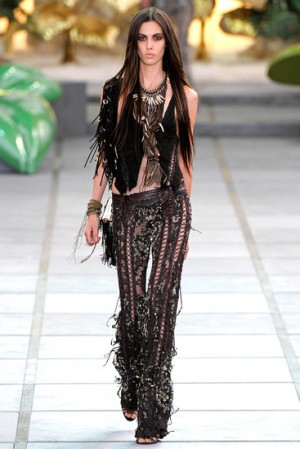
In 2011, John Galliano presented men's collection John Galliano fall-winter 2011/2012. The designer was inspired to create it by the dramatic images of Russian wanderers, as well as an exhibition dedicated to Russian ballet, which was held in London Museum Victoria and Albert. The collection includes fur coats, woolen tights, harem pants with floral prints, insulated leather jackets, richly embroidered coats, sweaters with floral patterns. The images were complemented with fur and knitted hats, voluminous belts and sashes, scarves, low shoes and woolen socks. The second part of the collection, dedicated to Russian ballet, included white shirts, cardigans, tight tights, jackets and vests with embroidery, and high boots. Neck scarves were used as accessories, fur hats, turbans, belts and belts. The show took place in the building of a former Franciscan monastery on the banks of the Seine and resembled a theatrical performance. Models came out in colorful images of rough coachmen, esauls, robbers, wanderers, tipsy peasants and ballet dancers.
![]()
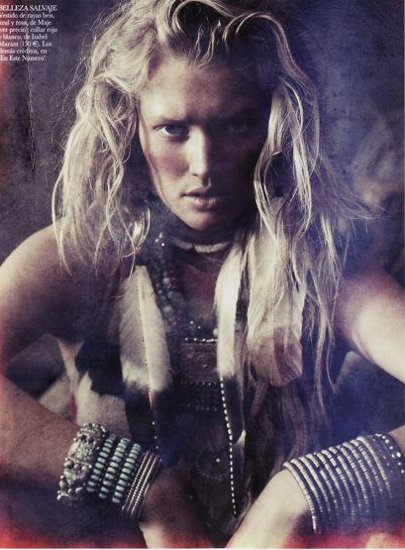
In 2012, at Milan Fashion Week, the Etro brand presented its spring-summer 2013 men's collection, inspired by Indian motifs. It included knee-length frock coats with buttons, worn over long shirts or tunics, combined with loose-fitting trousers. For footwear, Kean Etro suggested sandals, semi-brogues and loafers. The looks were complemented with turbans, scarves and tote bags. The main shades of the collection were purple, orange, white, blue, red, marsh, grey, light blue, terracotta and their combinations. Paisley and stripes were used as prints.
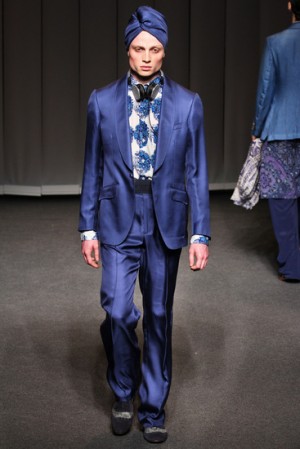
In 2012, at Milan Fashion Week, the brand presented its spring-summer 2013 men's collection with elements of Roman style. It included silk translucent tunics and vests, shorts, loose-fitting pants and underwear with geometric prints. The looks were complemented with gladiator sandals, wide leather belts, bracelets and pendants. The collection was made in white, grey, gold, black and their combinations.
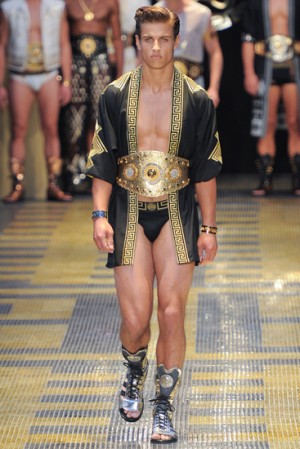
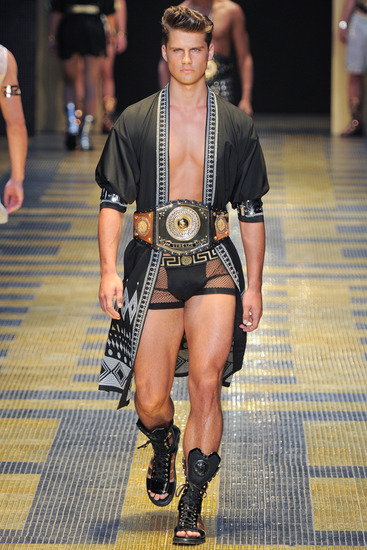
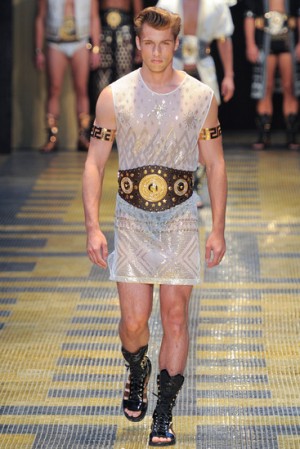
In 2013, at Milan Fashion Week, the brand presented its fall-winter 2013/2014 women's collection with Byzantine motifs. It includes tops, sundresses, skirts, dresses, tunics and shirts of various lengths with wide and narrow sleeves. The looks were complemented with pendants in the form of crosses, large earrings, Byzantine crowns, embroidered bags, platform shoes and heels. Mosaic-type patterns were used as prints for each item, referencing the decoration of early Christian basilicas: images of crosses, icons, and church symbols. Stefano Gabbana also used velvet, lace and cotton when sewing the collection. As decoration, the designers used rhinestones, beads, stones, glass, embroidery, and metallized elements. The clothing models of the “Old Russian” part of the collection were presented in shades of matte gold, ocher, white, blue, burgundy, pale green, light brown and blue.
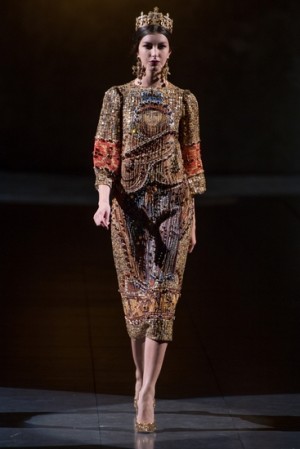
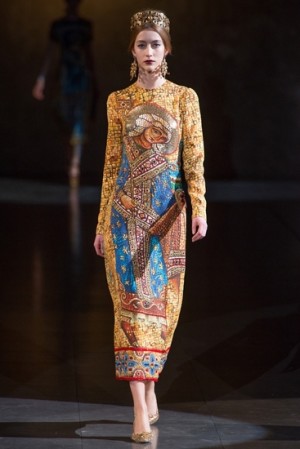
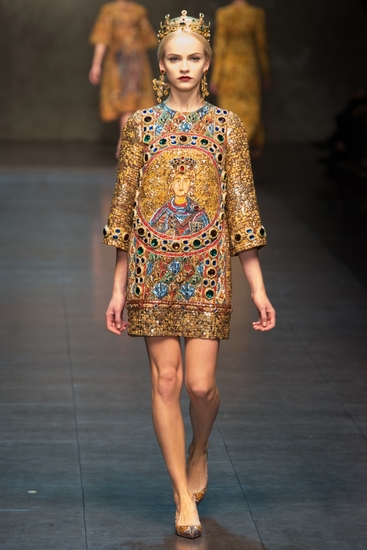
(Mary-Kate, Ashley Olsen), Sienna Miller, (Naomi Campbell), Jennifer Lopez, Shakira, Penelope Cruz, Ed Westwick, Megan Fox ( Megan Fox), Miley Cyrus, Aishwarya Rai, Cher, Anna Dello Russo, André Leon Talley, Gisele Bundchen, Christy Turlington, Paris Hilton ), Elizabeth Hurley, Nicole Richie, Eva Longoria, Janet Jackson, Michael Madsen, Madonna, Ashley Judd, Vyacheslav Zaitsev, Alexander Vasiliev, Philip Kirkorov and others.
